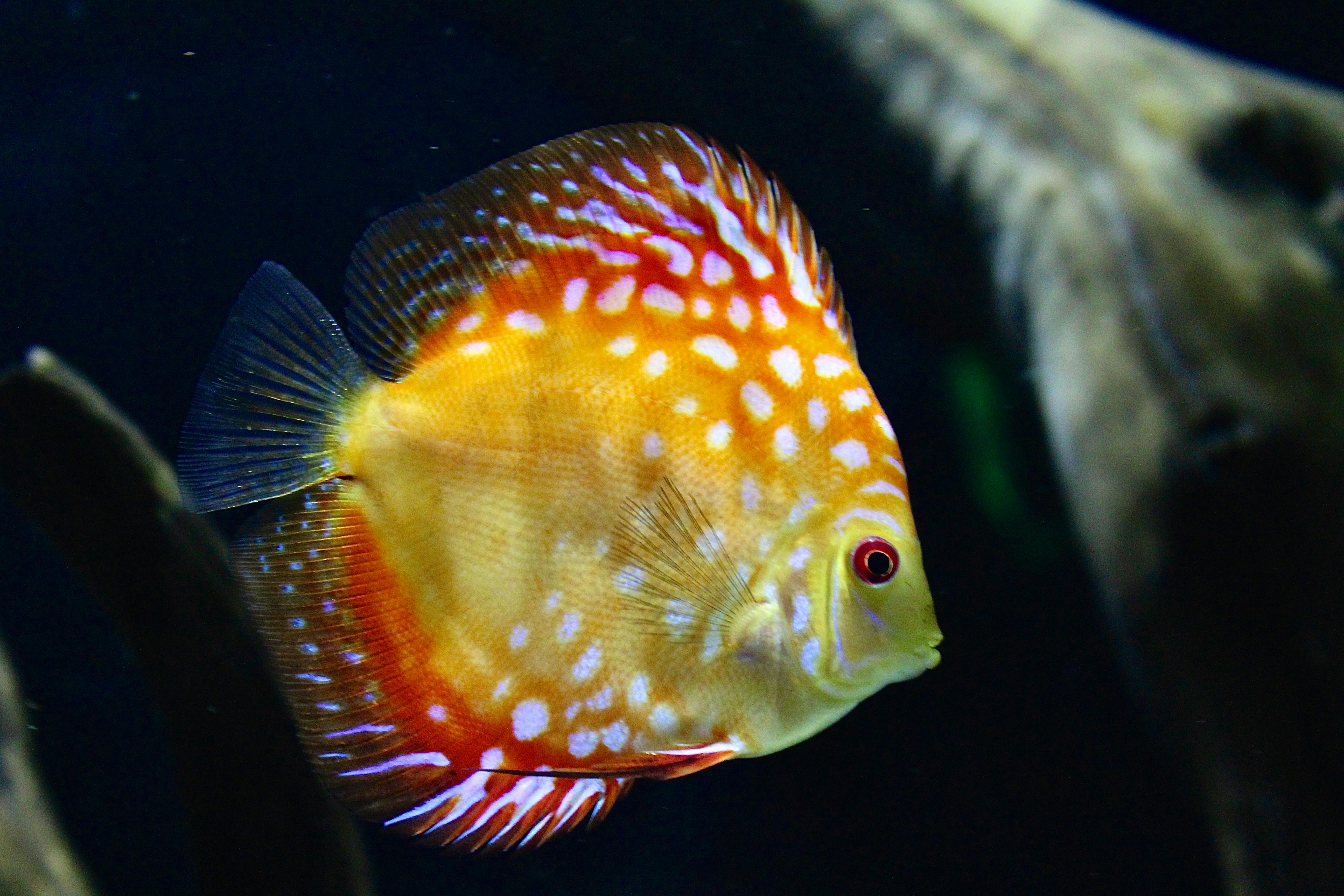Top 5 Ways to Optimize Your Koi Fish Tank for 2025

Top 5 Ways to Optimize Your Koi Fish Tank for 2025
Creating an ideal environment for koi fish is a vital aspect of being a responsible pet owner. Proper koi fish tank setup and maintenance contribute to the health and beauty of these vibrant creatures. With the evolution of technology, it is now easier to enhance the living conditions for your koi fish with effective tools and solutions. This article explores the top five strategies to optimize your koi fish tank in 2025, covering various aspects such as tank size, filtration, water quality, and decor.
By implementing these methods, you'll ensure your koi thrive, demonstrating stunning colors and lively behavior. Additionally, understanding the needs of koi fish, from proper temperature settings to compatible tank mates, will enrich their living experience. Let's delve into the essential aspects of creating a thriving koi fish tank.
Key takeaways from this article include the importance of the right koi fish tank size, maintaining water quality, choosing the best filtration system, the impact of tank decorations, and managing the right environment for optimal fish health.
Choose the Best Koi Fish Tank Size
The first step in optimizing your koi fish tank is selecting an appropriate size. Koi can grow significantly larger than many aquarists initially expect. For this reason, understanding the recommended koi fish tank size is crucial to ensure they have enough space to thrive.
Generally, a minimum of 100 gallons is recommended for the first koi, with each additional koi requiring approximately 50 gallons more. This spacious setup not only accommodates their growth but also helps maintain better water quality, ultimately leading to healthier fish.
When purchasing or setting up your koi fish tank, consider its dimensions and volume capacity, as these factors directly affect the fish's behavior and wellbeing. A larger tank allows for better water circulation and quality, reducing cleaning frequency and promoting a stable environment.
Furthermore, having adequate space fosters a natural habitat, where koi can exhibit their typical swimming and schooling behavior. This contributes to their overall happiness, health, and ensures a vibrant community within your tank.
Beyond the size, you should also pay attention to the tank's shape and design. Ensuring it fits well within your indoor or outdoor space while providing functional aesthetics can enhance the viewing experience. A well-planned koi fish tank is as much about functionality as it is about visual appeal.
Connected to this principle of size is how that space is utilized. The next crucial factor is ensuring excellent water quality, which can be managed through a filtering system.

Invest in a Quality Koi Fish Tank Filter
Following size considerations, the filtration system you choose is fundamental to maintaining a healthy koi fish tank. A strong koi fish tank filter ensures optimal water quality by removing toxins, debris, and waste, keeping your fish healthy in a balanced ecosystem.
There are various types of filtration systems available, such as mechanical, biological, and chemical filters, each serving a specific function. Mechanical filters remove physical particles, while biological filters convert harmful ammonia into nitrites and then into less harmful nitrates. Chemical filters can absorb impurities and contaminants in the water.
Choosing a koi fish tank filtration system should be based on the size of your tank and the number of koi you have. A good rule of thumb is to have a filtration capacity that can filter the entire tank volume 2-3 times per hour. This means that for a 200-gallon tank, you’ll need a system capable of handling at least 400-600 gallons of water per hour.
Consistency is key in koi fish tank maintenance, which includes regularly checking and replacing filter materials to ensure efficiency. This investment not only saves time but also helps to prevent costly long-term health issues for your koi.
Additionally, a well-maintained filtration system positively affects water temperature, oxygen levels, and chemistry, leading to a better environment for your koi fish. With these fundamentals in mind, let’s explore how to improve your koi’s living environment through tank decor and plant selection.
Enhance Your Koi Fish Tank with Plants and Decorations
A beautiful koi fish tank design is not just about aesthetics; it’s also crucial for the well-being of your fish. Adding the right koi fish tank plants offers numerous benefits, including providing hiding spots, encouraging natural behavior, and maintaining water quality.
Choosing aquatic plants that thrive in the same water conditions as your koi (pH, light, and temperature) is vital. Popular choices include water lilies, lotus, and anacharis, which not only look great but also help absorb excess nutrients in the water, thus preventing algae growth.
Decorations also contribute to the structural enrichment of the tank. Consider introducing rocks, driftwood, and other décor items that offer shelter and grazing opportunities. This arrangement supports the koi's natural behavior while adding visual appeal to your setup.
It’s important to avoid sharp decorations, as koi fish can easily injure themselves. Instead, focus on smooth-edged items that provide a safe environment. Regular maintenance and cleaning of decorative elements are also crucial to prevent any buildup of harmful bacteria that could jeopardize fish health.
Following these tips for decoration is an effective way to optimize the tank's ecosystem. Making the tank a visually appealing habitat leads to enhanced viewer satisfaction and contributes to the koi’s overall health. Moving forward, we’ll look into how monitoring and maintaining water quality is paramount for your koi's health.

Maintain Optimal Koi Fish Tank Water Quality
Water quality is fundamental to the longevity and health of your koi fish. A well-maintained koi fish tank meets their essential needs in terms of temperature, pH levels, and overall chemistry. Regular water changes and monitoring are key to ensuring the environment remains safe and healthy.
One of the first steps in achieving ideal water quality is regularly testing for ammonia, nitrites, and nitrates. The ideal pH level for koi fish tanks typically ranges between 7.2 and 8.2. Maintaining these parameters helps prevent stress and diseases, as koi are particularly sensitive to drastic changes in their environment.
Along with pH, keep a close eye on general hardness (GH) and carbonate hardness (KH) levels, which influence how koi adapt to their environment. Understanding these water quality factors is essential for keeping your koi healthy.
In addition, utilizing water conditioners and treatments can help to combat harmful chemicals and ensure a safer living environment. These products support the beneficial bacteria in your filtration system, promoting a balanced ecosystem.
To maintain the best koi fish tank water quality, a consistent maintenance schedule should be implemented, including regular water changes (around 10-20% weekly). This practice reduces the accumulation of toxins, fostering a safer habitat.
Understanding these water quality maintenance measures ties into the overall success of a koi fish tank design. By focusing closely on tank parameters, you create a sanctuary where your fish can grow and thrive. Next, we'll discuss practical koi fish feeding strategies to support your fish’s nutritional needs.
Establish a Balanced Koi Fish Feeding Schedule
After ensuring their living environment is optimal, it’s important to focus on koi fish nutrition and feeding habits. Establishing a balanced feeding schedule is crucial for promoting healthy growth and enhancing the visual appeal of your koi. Koi thrive on a diet rich in nutrients, so understanding the right food options for their specific needs is essential.
This entails offering high-quality koi fish food formulated specifically for their dietary requirements. Consider incorporating pellets, flakes, and supplements to provide a balanced diet. In addition, introducing protein-based foods during the warmer months can help support growth rates and overall health.
When feeding your koi, it is advisable to offer small amounts multiple times a day, rather than one large feeding session. This approach mimics their natural foraging behavior and promotes healthy digestion while ensuring all koi in the tank receive adequate nutrition.
It’s equally important to monitor and adjust the feeding frequency according to the season and water temperature. Koi fish eat less in colder temperatures, while active koi consume more during warmer months.
Keeping a detailed feeding log helps track your koi's nutrition and health. This log could also be beneficial for detecting signs of illness or behavioral changes.
By understanding koi fish feeding habits and adjusting your approach based on environmental conditions, you set the stage for a thriving koi fish tank. In conclusion, utilizing these top strategies will lead to an optimized and beautiful habitat for your koi, significantly enhancing their quality of life.